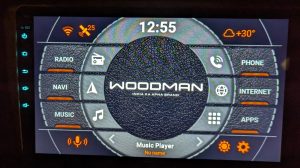 Bloggers and aspiring blog writers better wise up when it comes to the future of mobile computing. We currently write and design our sites with the standard desktop web surfer in mind. But the majority of future web users are going to be searching for, accessing, and sharing primarily and even exclusively through their mobile device or even their prepaid phone. If you think this is some sort of futuristic projection expected to occur decades from now, think again – mobile web traffic is expected to increase 400% by the year 2015. These web users aren’t going to simply spring up: people are going to be leaving their desktops and laptops behind in favor of pocket-sized portals to the web. The question bloggers must ask themselves is this: will my blog fit?
Bloggers and aspiring blog writers better wise up when it comes to the future of mobile computing. We currently write and design our sites with the standard desktop web surfer in mind. But the majority of future web users are going to be searching for, accessing, and sharing primarily and even exclusively through their mobile device or even their prepaid phone. If you think this is some sort of futuristic projection expected to occur decades from now, think again – mobile web traffic is expected to increase 400% by the year 2015. These web users aren’t going to simply spring up: people are going to be leaving their desktops and laptops behind in favor of pocket-sized portals to the web. The question bloggers must ask themselves is this: will my blog fit?
The Mobile Browser
The increased sophistication of the Internet has led to many of us bloggers taking the time to create some particularly funky website layouts and alternatively styled navigation. Right off the bat, it should be mentioned that this stuff is usually bad news bears for SEO. But when it comes to optimizing your site for the mobile search and mobile access, pizzazz makes a bad situation a whole lot worse.
Mobile browsers have limits. They can typically only tolerate a web page that’s 10kb big. Anything more than that and you’ll clog the system. Chances are the impatient user will backup and attempt to consult another site in the time it takes for your massively-decked out website to load. That’s bad news for your blog SEO.
The Mobile Website
Unless you can simply use Google Reader to transfer your RSS feed into a mobile-friendly version you can link to on your traditional website, it’s a safe bet to instead simply design your blog with mobile use in mind. That means centering everything of importance, because most mobile browsers fail to capture sidebar details easily. It also means eliminating obnoxious mobile-traffic killers like Flash and automatic video play. Frankly, nobody wants to see this stuff anyway whether they’re browsing on a desktop, laptop, or smartphone.
Big images must also be discarded in favor of small graphics that fit better with the speeds associated with 3G and 4G. In their place, insert easy to find navigation tools, centered near the top, so that visitors on touchscreen phones can easily find their way back to the homepage. Ideally, every page of your blog should link to another one, in order to keep traffic there and not allow it to float away to somewhere else on the web.
Practice Before You Publish
Round up as many friends and family as it takes to have access to every possible mobile browser in existence, and examine your blog on each device to make sure it looks great and there aren’t any problems for visitors. The iPhone’s Safari is very different from Android’s web browser, so it’s vital that you do this before publishing content and missing out on that golden opportunity of rapid backlink creation.
Mobile web browsing is the future. It’s imperative that bloggers get caught up to speed on how they must create their sites for optimum amounts of traffic. If the overwhelming majority of your traffic comes from mobile users, then you have to become mobile friendly. There’s just no way around it.















More over Mobiles are a great topic for Bloggers to write about!
nice post…
i will share this post on my facebook because your site was very nice and you always share great post…